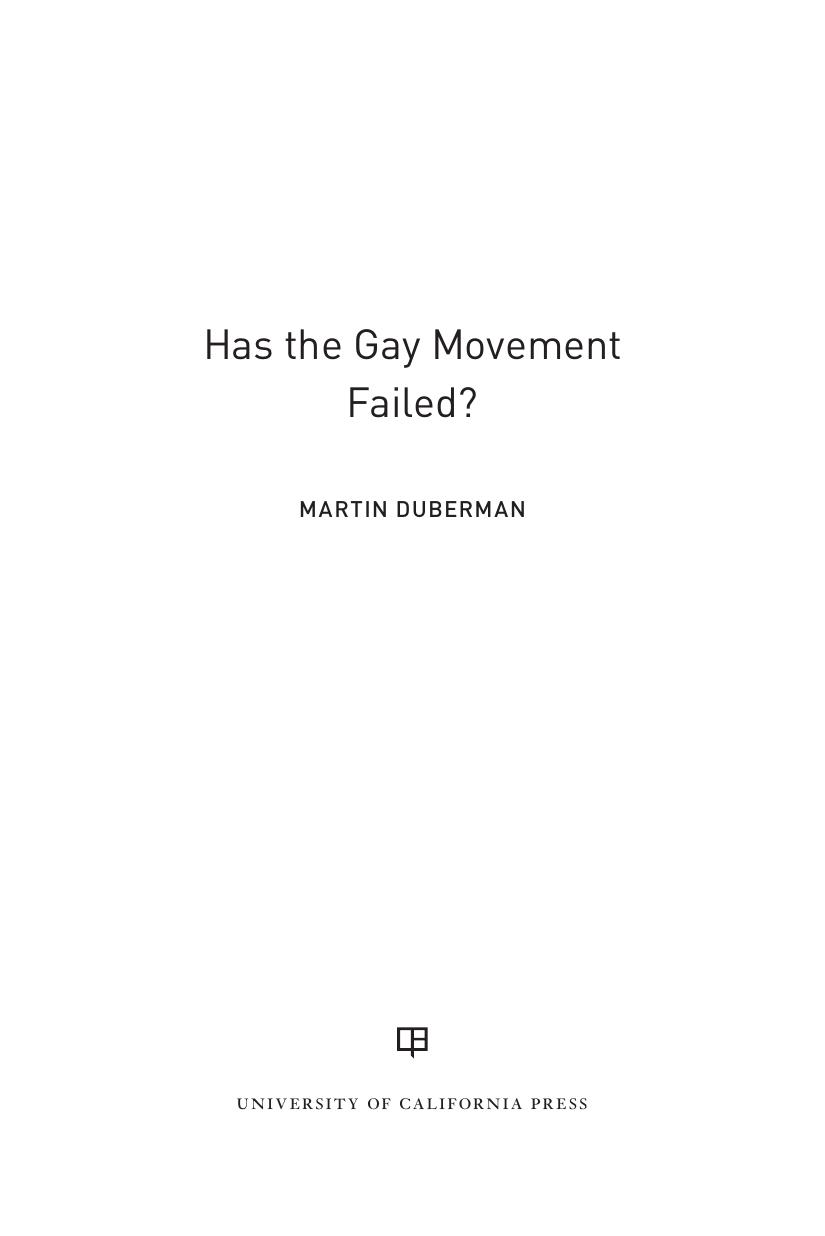Has the Gay Movement Failed? by Martin Duberman

Author:Martin Duberman [Duberman, Martin]
Language: eng
Format: epub, pdf
Tags: Social Science, LGBT Studies, General, History, Social History, Gay Studies
ISBN: 9780520970847
Google: Iq9UDwAAQBAJ
Amazon: B07C15VXTM
Publisher: Univ of California Press
Published: 2018-05-18T00:00:00+00:00
In her provocative book Not Gay: Sex between Straight White Men, Elizabeth Jane Ward reports on a new phenomenon that’s recently emerged among the young: “heteroflexibility”—that is, “I’m straight, but shit happens.” It’s not clear how widespread the phenomenon is, but those who’ve joined its ranks apparently reject the label bisexual—since it implies a wavering identity—and heteroflexibles insist on their unwavering heterosexuality. To them, sexual orientation is biological in origin and their heterosexuality is constitutional—fixed. Various studies show that some college-age men, though rejecting the label “bisexual,” are willing to describe themselves as “mostly” (rather than exclusively) heterosexual. What they mean, it seems, is that they see themselves as available for the unexpected “lark” of a homosexual encounter, justifying it as a superior capacity for openness and being game for expanded experience—but not as an intrinsic piece of their core identity. They know they’re not gay, because (they tell themselves) they don’t love other men; they don’t confuse sex with romance, as truly gay men purportedly do.34
This doesn’t mean that we’re obligated to take these heteroflexibles at their word. Those theorists committed to a view of human sexuality centered on the concept of “polymorphous perversity” might well argue that young college men who subject themselves to the common fraternity hazing ritual of the “elephant walk”—during which naked young men form a chain by inserting a thumb into the anus of the man in front of him—are unconsciously acting out otherwise unacceptable homosexual urges while managing to escape the onus of adopting a gay identity.
Yet for heteroflexibles the imperative conviction that one is not gay overwhelms the behavioral evidence of the elephant walk. Even a specialist like Lisa Diamond (author of Sexual Fluidity) sees no contradiction between joining a fraternity ritual of “obvious” homoerotic overtones and seeing sexual orientation as hard-wired, a biological given. It helps to believe, as growing numbers of Americans (including Diamond) do, that sexual orientation, like race, is inborn. The proportion of those who believe in a biological explanation for sexual orientation has risen from a mere 13 percent in 1977 to 52 percent in 2010.
Yet the majority of academic specialists and intellectuals haven’t joined that particular bandwagon. Any number of them, given the incomplete nature of our knowledge, are willing to pay at least pro forma lip service to the possibility that some unknown combination of genes and hormones interacts with unspecified environmental circumstances to create sexual desire. But that’s a long way from saying that we know enough to elevate a possibility to a certainty; given the shifting, tumultuous inner whirlpool of individual desire, we may never know enough to be able to identify and concretely link causal elements to particular behaviors, sexual or otherwise.
What about the men in Jane Ward’s Not Gay? An outside observer watching them “perform” the homoerotically charged elephant walk might be tempted to question their absolutist claim to heterosexuality. But the men themselves are in no doubt; for them it’s a tough-guy ritual (like the way bikers kiss each other);
Download
Has the Gay Movement Failed? by Martin Duberman.pdf
This site does not store any files on its server. We only index and link to content provided by other sites. Please contact the content providers to delete copyright contents if any and email us, we'll remove relevant links or contents immediately.
| African-American Studies | Asian American Studies |
| Disabled | Ethnic Studies |
| Hispanic American Studies | LGBT |
| Minority Studies | Native American Studies |
Cecilia; Or, Memoirs of an Heiress — Volume 1 by Fanny Burney(31447)
Cecilia; Or, Memoirs of an Heiress — Volume 3 by Fanny Burney(31037)
Cecilia; Or, Memoirs of an Heiress — Volume 2 by Fanny Burney(30985)
The Great Music City by Andrea Baker(23036)
We're Going to Need More Wine by Gabrielle Union(18126)
Bombshells: Glamour Girls of a Lifetime by Sullivan Steve(13158)
Pimp by Iceberg Slim(13000)
All the Missing Girls by Megan Miranda(12840)
Fifty Shades Freed by E L James(12492)
Talking to Strangers by Malcolm Gladwell(11991)
Norse Mythology by Gaiman Neil(11964)
Crazy Rich Asians by Kevin Kwan(8413)
Mindhunter: Inside the FBI's Elite Serial Crime Unit by John E. Douglas & Mark Olshaker(7898)
The Lost Art of Listening by Michael P. Nichols(6534)
Enlightenment Now: The Case for Reason, Science, Humanism, and Progress by Steven Pinker(6449)
Bad Blood by John Carreyrou(5816)
The Four Agreements by Don Miguel Ruiz(5578)
Weapons of Math Destruction by Cathy O'Neil(5097)
We Need to Talk by Celeste Headlee(4922)
